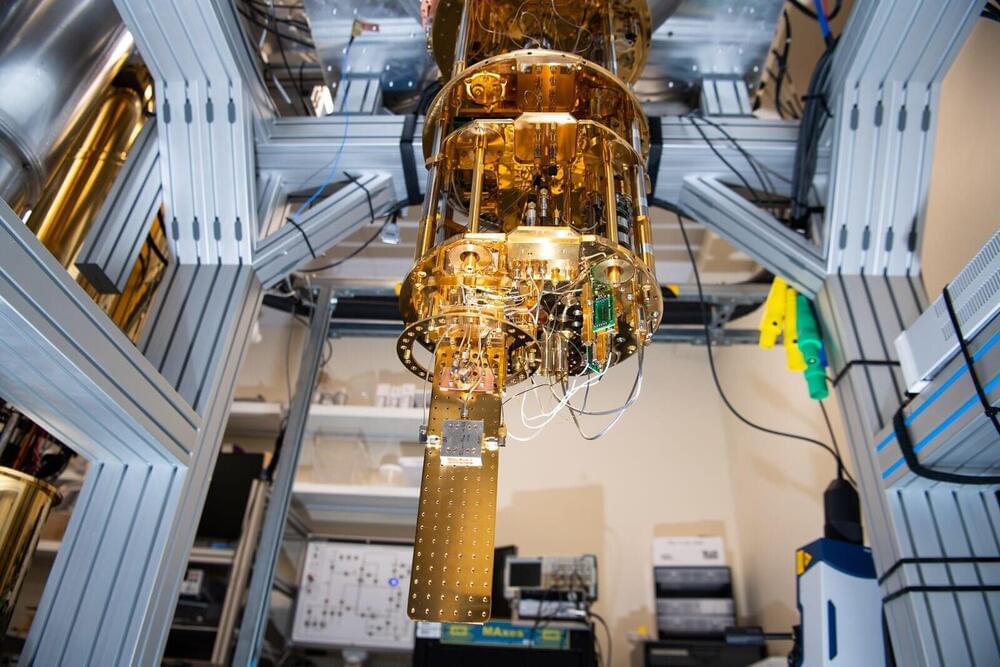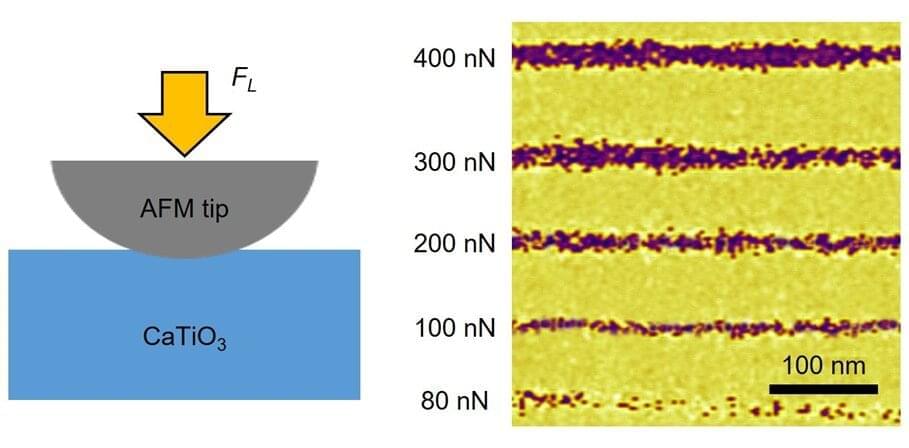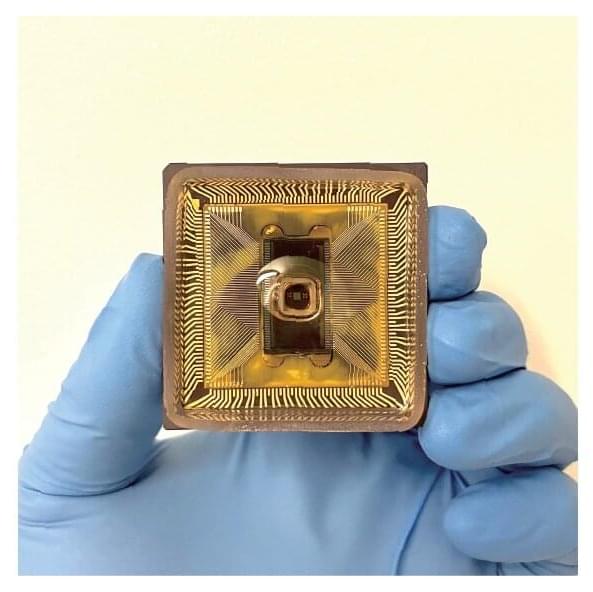A prototype computer built using a magnetic material called a skyrmion has been programmed to recognise handwritten digits. The approach could be particularly energy-efficient.



If you’ve ever tried to carry on a conversation in a noisy room, you’ll be able to relate to the scientists and engineers trying to “hear” the signals from experimental quantum computing devices called qubits. These basic units of quantum computers are early in their development and remain temperamental, subject to all manner of interference. Stray “noise” can masquerade as a functioning qubit or even render it inoperable.
That’s why physicist Christian Boutan and his Pacific Northwest National Laboratory (PNNL) colleagues were in celebration mode recently as they showed off PNNL’s first functional superconducting qubit. It’s not much to look at. Its case—the size of a pack of chewing gum—is connected to wires that transmit signals to a nearby panel of custom radiofrequency receivers. But most important, it’s nestled within a shiny gold cocoon called a dilution refrigerator and shielded from stray electrical signals. When the refrigerator is running, it is among the coldest places on Earth, so very close to absolute zero, less than 6 millikelvin (about −460 degrees F).
The extreme cold and isolation transform the sensitive superconducting device into a functional qubit and slow down the movement of atoms that would destroy the qubit state. Then, the researchers listen for a characteristic signal, a blip on their radiofrequency receivers. The blip is akin to radar signals that the military uses to detect the presence of aircraft. Just as traditional radar systems transmit radio waves and then listen for returning waves, the physicists at PNNL have used a low-temperature detection technique to “hear” the presence of a qubit by broadcasting carefully crafted signals and decoding the returning message.

Construction data can quickly scale into gigabytes and terabytes of data. The field is complicated because teams use various file formats to design, construct and operate a building or facility. Teams must often load the whole file into proprietary rendering tools before showing off a new design or collaborating on schedules. These files can be even more complex when building out large-scale digital twins of whole cities like Helsinki or Singapore.
Bentley Systems hopes to change that. At a technology demonstration event in London, Bentley showed off a new 3D streaming codec for the infrastructure metaverse called 3DFT. It’s already running on the Epic Unreal Engine, and Bentley plans to support other platforms down the road.
3DFT is not the first format for streaming metaverse data. The GIS industry has been streaming 2D data for years using tiles. And the Open Geospatial Consortium has been working on the 3D Tiles standard to extend streaming into the third dimension.
Foresight Biotech & Health Extension Meeting sponsored by 100 Plus Capital.
Program & apply to join: https://foresight.org/biotech-health-extension-program/
Jennifer Garrison, Buck Institute.
Reframing Health and Aging through the Lens of Reproduct.
Jennifer Garrison is an assistant professor at the Buck Institute for Research on Aging and also holds appointments in the Department of Cellular and Molecular Pharmacology at University of California, San Francisco (UCSF) and the Davis School of Gerontology at the University of Southern California. During her doctoral studies at UCSF with Jack Taunton, she discovered the molecular target of a natural product and elucidated a novel mechanism by which small molecules can regulate protein biogenesis.
Join us:
► Twitter: https://twitter.com/foresightinst.
► Facebook: https://www.facebook.com/foresightinst.
► Instagram: https://www.instagram.com/existentialhope/
► LinkedIn: https://www.linkedin.com/company/foresight-institute.
If you enjoy what we do please support us via Patreon: https://www.patreon.com/foresightinstitute.
If you’re interested in joining these meetings consider donating through our donation page: https://foresight.org/donate/
Foresight Institute advances technologies for the long-term future of life, focusing on molecular machine nanotechnology, biotechnology, and computer science.

Digitalization generated 4 percent of the total greenhouse emissions in 2020.
More than half of the digital data firms generate is collected, processed, and stored for single-use purposes. Often, it is never re-used. This could be your multiple near-identical images held on Google Photos or iCloud, a business’s outdated spreadsheets that will never be used again, or data from internet of things sensors that have no purpose.
This “dark data” is anchored to the real world by the energy it requires. Even data that is stored and never used again takes up space on servers — typically huge banks of computers in warehouses. Those computers and those warehouses all use lots of electricity.
Gorodenkoff/iStock.
This is a significant energy cost that is hidden in most organizations. Maintaining an effective organizational memory is a challenge, but at what cost to the environment?

Circa 2019
Lodestone, a naturally-occurring iron oxide, was the first persistently magnetic material known to humans. The Han Chinese used it for divining boards 2,200 years ago; ancient Greeks puzzled over why iron was attracted to it; and, Arab merchants placed it in bowls of water to watch the magnet point the way to Mecca. In modern times, scientists have used magnets to read and record data on hard drives and form detailed images of bones, cells and even atoms.
Throughout this history, one thing has remained constant: Our magnets have been made from solid materials. But what if scientists could make magnetic devices out of liquids?
In a study published Thursday in Science, researchers managed to do exactly that.

A method to draw data in an area smaller than 10 nanometers has been proposed in a recent study published in Physical Review Letters
A joint research team led by Professor Daesu Lee (Department of Physics) of POSTECH, Professor Se Young Park (Department of Physics) at Soongsil University, and Dr. Ji Hye Lee (Department of Physics and Astronomy) of Seoul National University has proposed a method for densely storing data by “poking” with a sharp probe. This method utilizes a material in the metastable state, whose properties change easily even with slight stimulation.
A thin film of metastable ferroelectric calcium titanate (CaTiO3) enables the polarization switching of a material even with a slight pressure of a probe: A very weak force of 100 nanonewtons (nN) is more than enough. The joint research team succeeded in making the width of the polarization path smaller than 10 nm by using this force and found the way to dramatically increase the capacity of data storage. This is because the smaller the size of the path, the more data the single material can store.
Two milliseconds—or two thousandths of a second—is an extraordinarily long time in the world of quantum computing. On these timescales the blink of an eye—at one 10th of a second—is like an eternity.
Now a team of researchers at UNSW Sydney has broken new ground in proving that ‘spin qubits’—properties of electrons representing the basic units of information in quantum computers—can hold information for up to two milliseconds. Known as ‘coherence time’, the duration of time that qubits can be manipulated in increasingly complicated calculations, the achievement is 100 times longer than previous benchmarks in the same quantum processor.
“Longer coherence time means you have more time over which your quantum information is stored—which is exactly what you need when doing quantum operations,” says Ph.D. student Ms Amanda Seedhouse, whose work in theoretical quantum computing contributed to the achievement.

Microprocessors in smartphones, computers, and data centers process information by manipulating electrons through solid semiconductors, but our brains have a different system. They rely on the manipulation of ions in liquid to process information.
Inspired by the brain, researchers have long been seeking to develop “ionics” in an aqueous solution. While ions in water move slower than electrons in semiconductors, scientists think the diversity of ionic species with different physical and chemical properties could be harnessed for richer and more diverse information processing.
Ionic computing, however, is still in its early days. To date, labs have only developed individual ionic devices such as ionic diodes and transistors, but no one has put many such devices together into a more complex circuit for computing until now.

The concept of “symmetry” is essential to fundamental physics: a crucial element in everything from subatomic particles to macroscopic crystals. Accordingly, a lack of symmetry—or asymmetry—can drastically affect the properties of a given system.
Qubits, the quantum analog of computer bits for quantum computers, are extremely sensitive—the barest disturbance in a qubit system is enough for it to lose any quantum information it might have carried. Given this fragility, it seems intuitive that qubits would be most stable in a symmetric environment. However, for a certain type of qubit—a molecular qubit—the opposite is true.
Researchers from the University of Chicago’s Pritzker School of Molecular Engineering (PME), the University of Glasgow, and the Massachusetts Institute of Technology have found that molecular qubits are much more stable in an asymmetric environment, expanding the possible applications of such qubits, especially as biological quantum sensors.